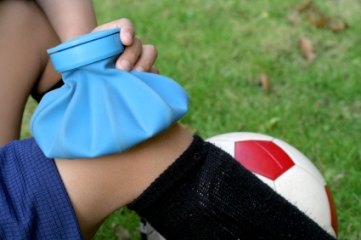Rising rates of anterior cruciate ligament (ACL) injuries in younger athletes - which some have labeled an epidemic, are forcing researchers and surgeons to better analyze and investigate ways to improve treatment and longevity of the tissues used for repair.
Comparing how well young, very active patients perform after reconstructive surgery using allografts (tis sue from a cadaver) versus autografts (the patient's own tissue), a first-ever study in the journal Sports Health: A Multidisciplinary Approach seemed to come down squarely on the side of autografts, finding a failure rate for allografts (25%) almost three times higher than when autografts were used (9.6%).
sue from a cadaver) versus autografts (the patient's own tissue), a first-ever study in the journal Sports Health: A Multidisciplinary Approach seemed to come down squarely on the side of autografts, finding a failure rate for allografts (25%) almost three times higher than when autografts were used (9.6%).
Researchers found no difference in failure rates at follow-up between 24 and 51 months after the surgeries in the study period between 1998 and 2012, with hamstring and patella tendon autografts performing equally well.
"The differences we observed in the failure rates of allografts vs autografts in young or highly active patients, will hopefully provide orthopaedic surgeons better insight in how best to use these tissues in repairing an ACL," said lead author David Wasserstein of University of Toronto.
Sources:
American Orthopaedic Society for Sports Medicine (AOSSM)
Wasserstein D, Sheth U, Cabrera A, Spindler KP. A Systematic Review of Failed Anterior Cruciate Ligament Reconstruction with Autograft Compared With Allograft in Young Patients. Sports Health: A Multidisciplinary Approach. Published online before print March 24, 2015, doi: 10.1177/1941738115579030








